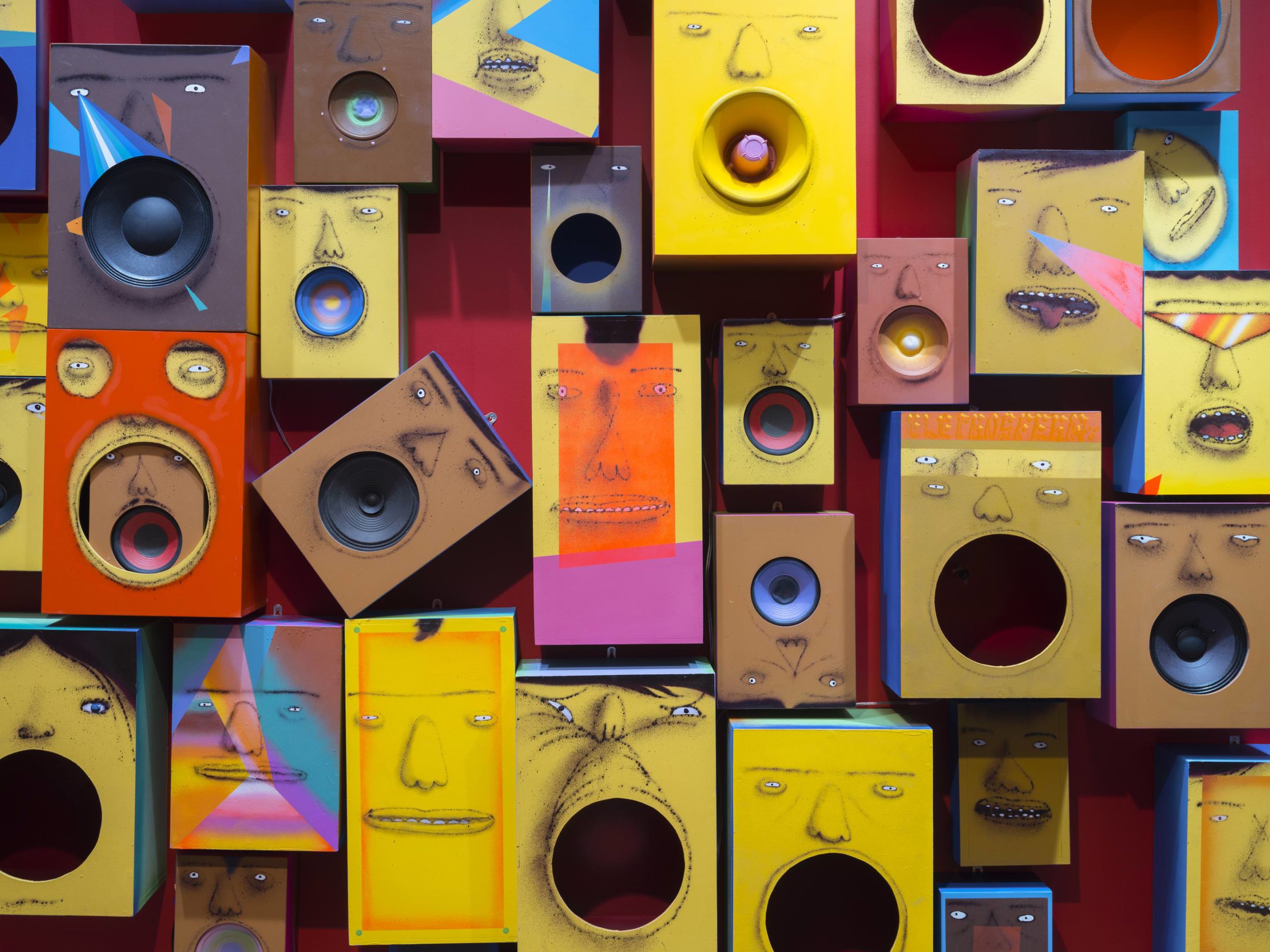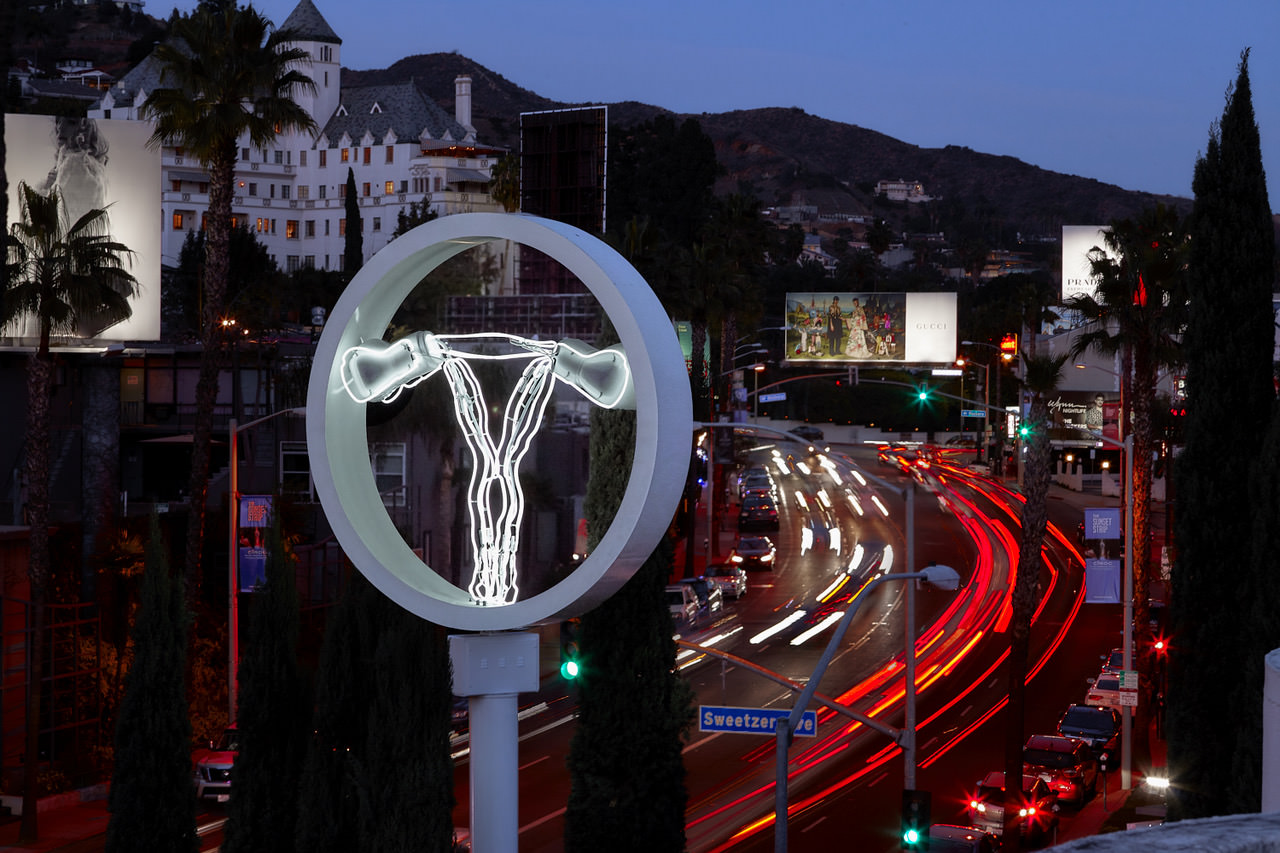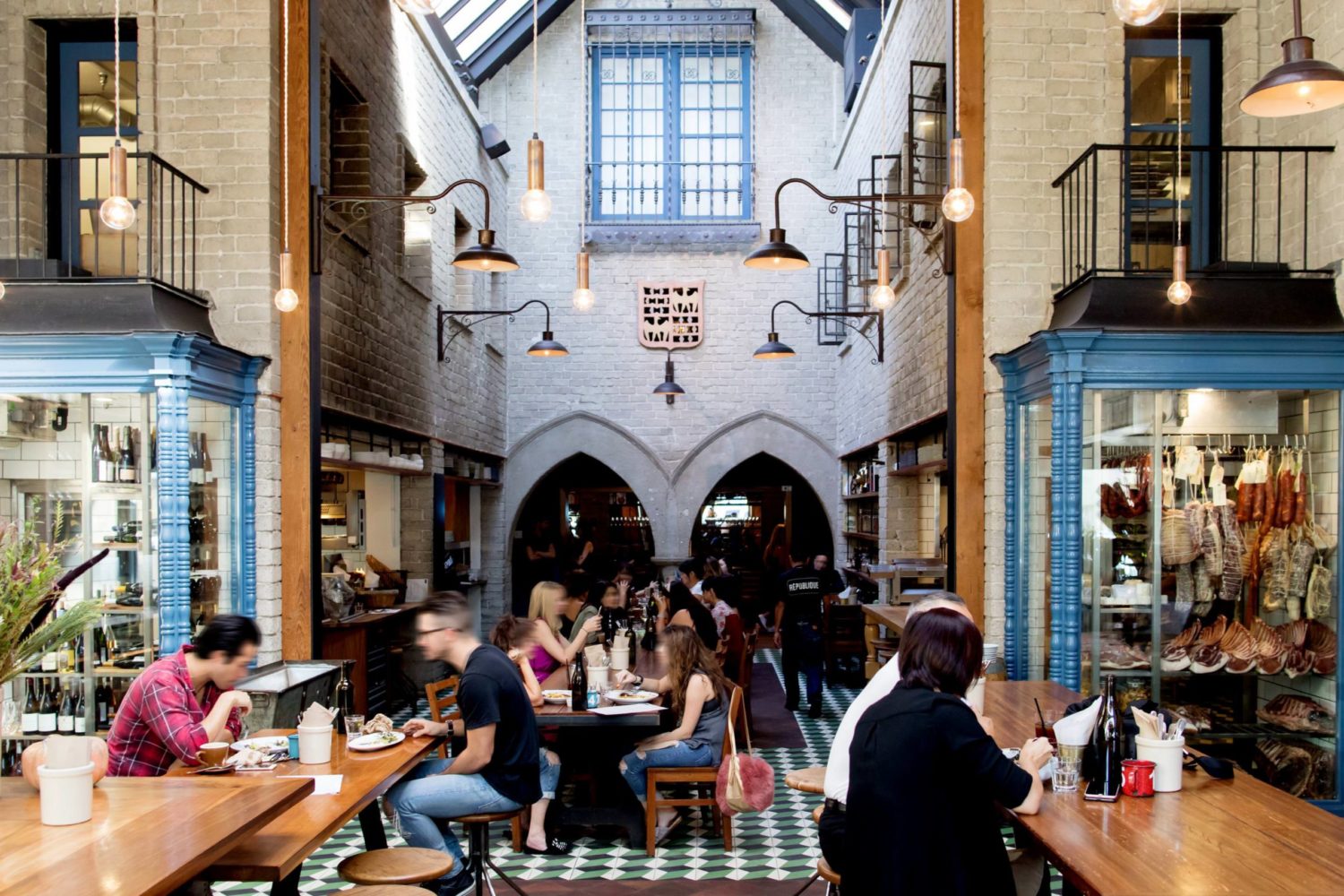“There’s beer in the fridge,” said artist Björn Roth. “Have a drink if you like.” This gesture of hospitality was extended inside a ramshackle workshop that resembles Pee-Wee’s Playhouse overtaken by a band of highly creative hoarders. The paint- and glue-spattered warren is Grosse Tischruine (Large Table Ruin), a work begun by the late Dieter Roth, father of Björn, in 1978, with a single table and enlarged with each installation. Having arrived last month in 30 shipping crates, it now spreads across a room-sized niche of Hauser & Wirth’s cavernous new downtown space—the former Roxy roller disco serenely transformed by Annabelle Selldorf–as part of the “Dieter Roth.Björn Roth” exhibition, on view through April 13.
“To install it is always so difficult,” said Björn of Grosse Tischruine, as he toured the show earlier this week. “It’s mostly made of the materials used to install it.” His own sons, Oddur and Einar, moved purposefully through the maze of tables, chairs, stepladders, and sawhorses. As one of several projectors whirred to life, filling a screen with a looped trio of experimental films made by Dieter Roth in the 1950s, Björn sidled up to shelves lined in empty beer bottles. “By the brands, you can see the cultures and cities where this piece has been installed,” he explained. “There’s beer from Holland, from Vienna, from Iceland. There’s beer from Basel, there’s beer from Kassel. It’s a bit of an inventory or a story about the piece.”
As for how this work ended up colonizing a corner of Chelsea, there’s a story there, too. “My father was very skeptical of the art market,” said Björn. “The first time we met, we were discussing working together, and Dieter showed him this piece and said, ‘Can you sell this?’ And immediately, Iwan [Wirth] said, ‘No problem.’ And he bought it himself.” Most works in the exhibition, which includes the floor of Dieter Roth’s studio in Iceland, a 1997-98 video diary that plays on a wall of small screens, and a 16-foot tower of chocolate Roth busts (made within the exhibition’s “New York Kitchen” installation), are loans, about half of them from the Hamburg-based Dieter Roth Foundation.
The decision to inaugurate Hauser & Wirth’s second exhibition space (the first in a townhouse on East 69th Street) with a Roth show was a “no-brainer,” according to Marc Payot, a partner and vice president of the gallery. “Maybe not the obvious choice from an American perspective, because the work is not that known in this country,” he told reporters at Monday’s preview. “But no other artist stands closer to our identity than Björn Roth and Dieter Roth. The process and the communication are emphasized, it’s not just about the finished product. Throughout our gallery program, this is a very important aspect.”
Björn’s delight in the creative process was evident as he proceeded through the exhibition. “This is what happens when you put a banana in a printing press,” he said, nodding to an untitled 1965-1966 work that spans an entire wall, a fruity rejoinder to Rauschenberg’s Automobile Tire Print, before approaching a wall-mounted assemblage of toys, trinkets, dead insects in plastic tubes, and other detritus. “I don’t know what this is,” he said of the work, created by his father between 1980 and 1993, and then grinned. “But I love it.”
Sculptor, painter, printmaker, collagist, poet, diarist, graphic designer, publisher, filmmaker, and musician, German-born Swiss artist Dieter Roth (1930 – 1998) has been described as ‘a performance artist in all the mediums he touched’. Everything Roth made involved acting out a central concept of art and life as utterly indivisible – a single enterprise in which material stuff is subservient to the emotional and sensual experience for which it stands. Roth was not an artist who tolerated boundaries. In seeking to pulverize them, he elevated the processes by which things happen, embracing accidents, mutations, and accretions of detail over time; inviting nature to have its way with unstable mediums, including fruit, chocolate, and sugar; and perhaps most boldly, inviting the dilution of his own authorship through constant, intensive collaboration with other artists. Those partners included such significant figures as Richard Hamilton, Emmett Williams, Arnulf Rainer, and Hermann Nitsch. But it was Roth’s long and symbiotic collaboration with his own son, artist Björn Roth, that stands as testament to the enormous and enduring potency of his restless, relentless process.








